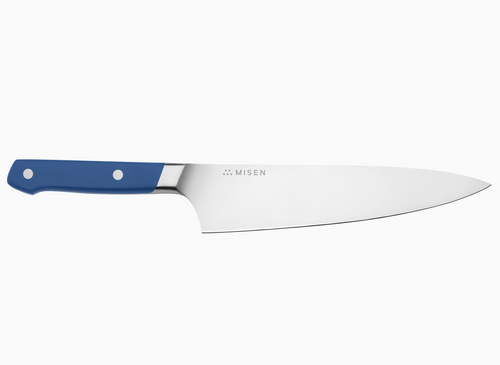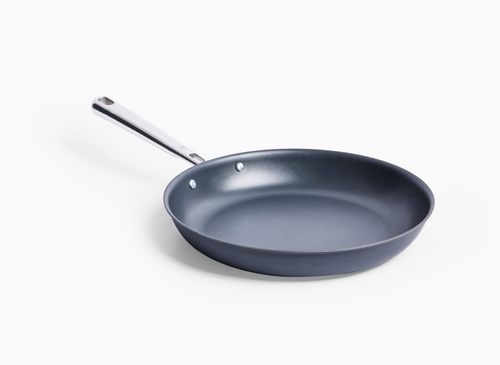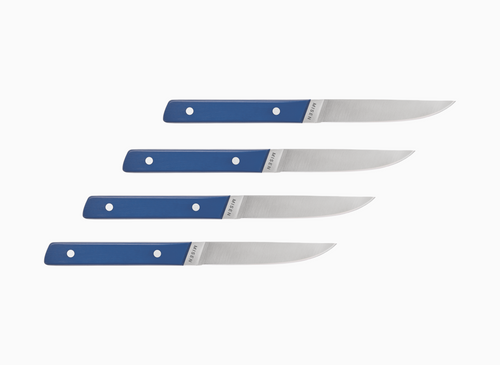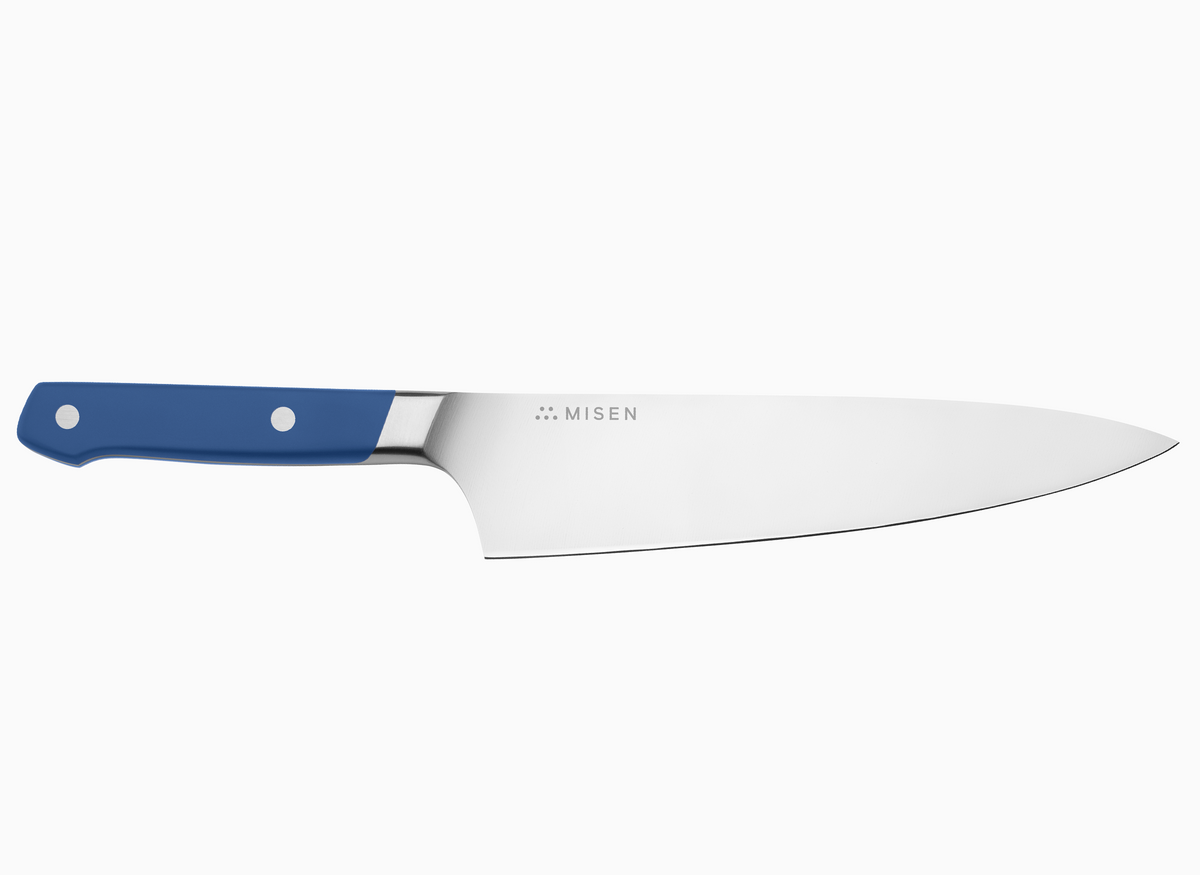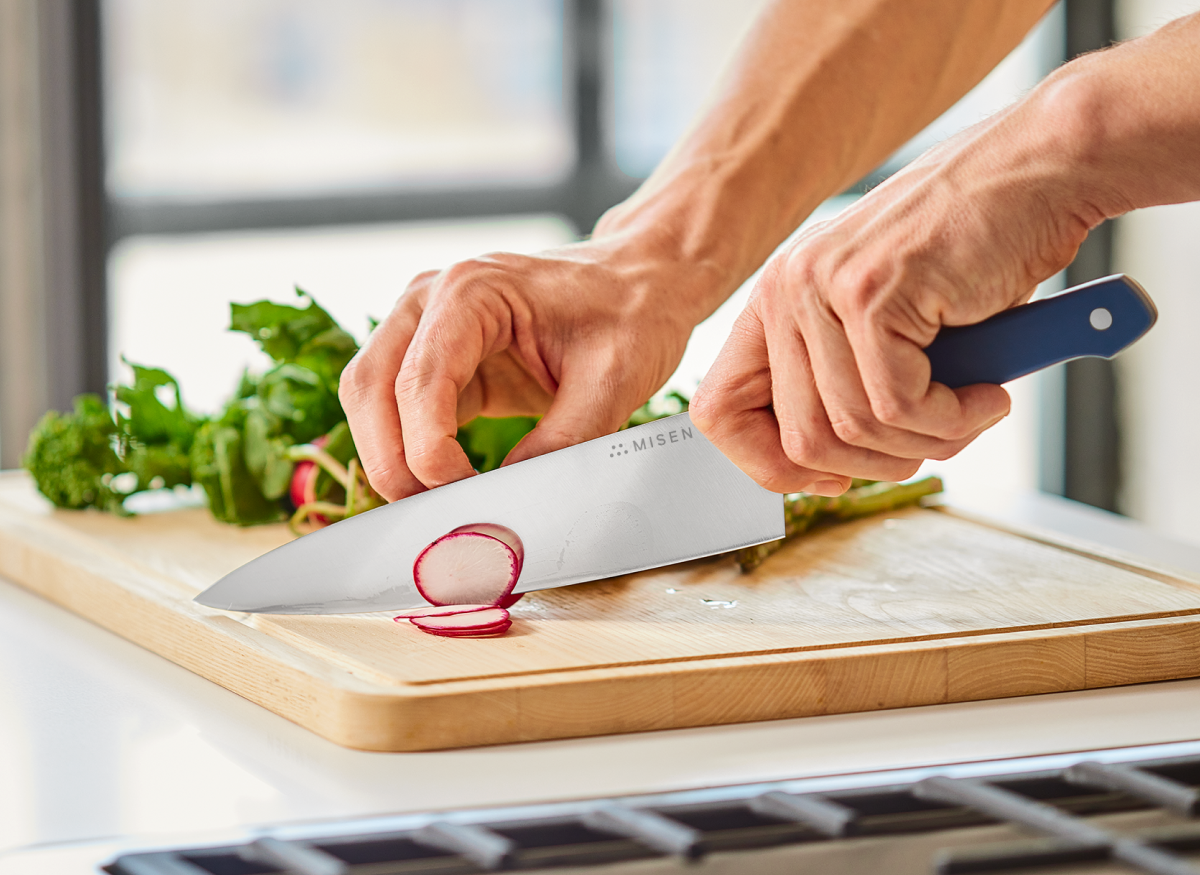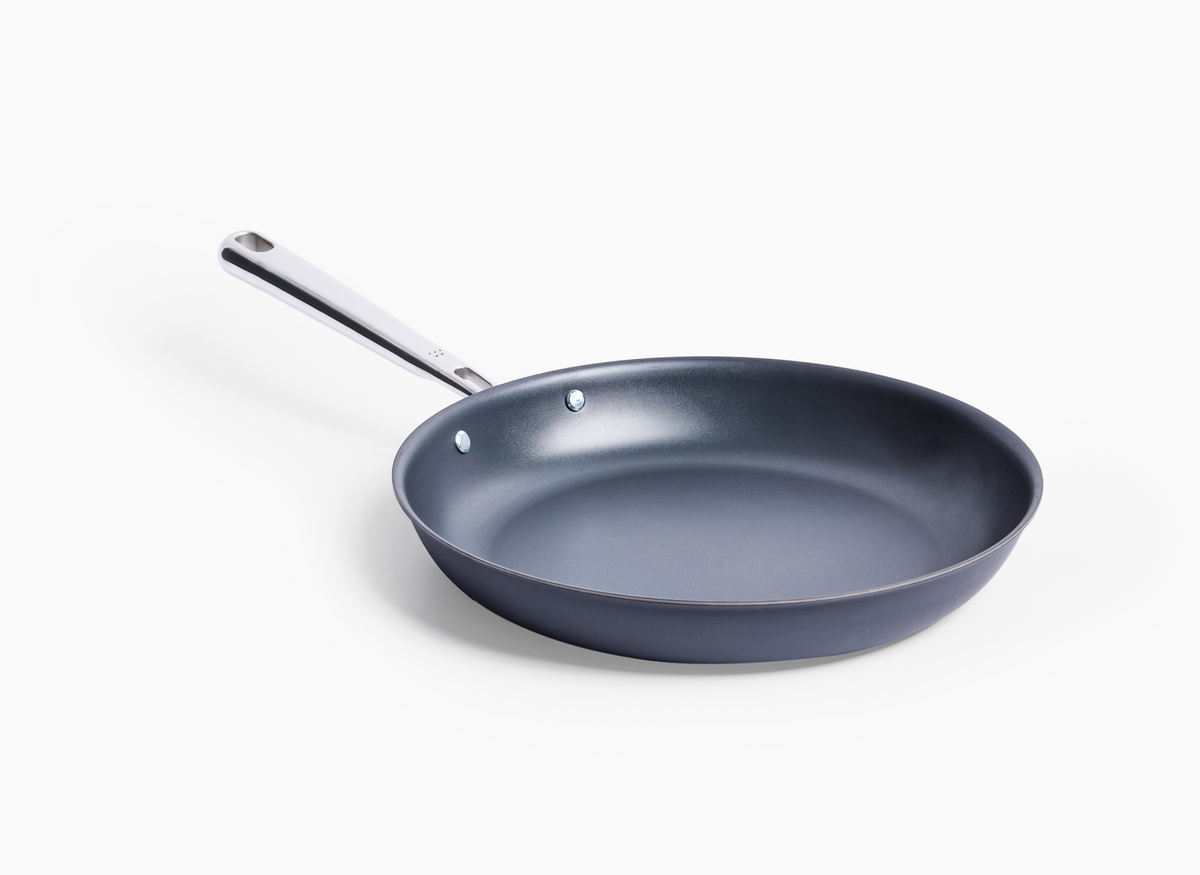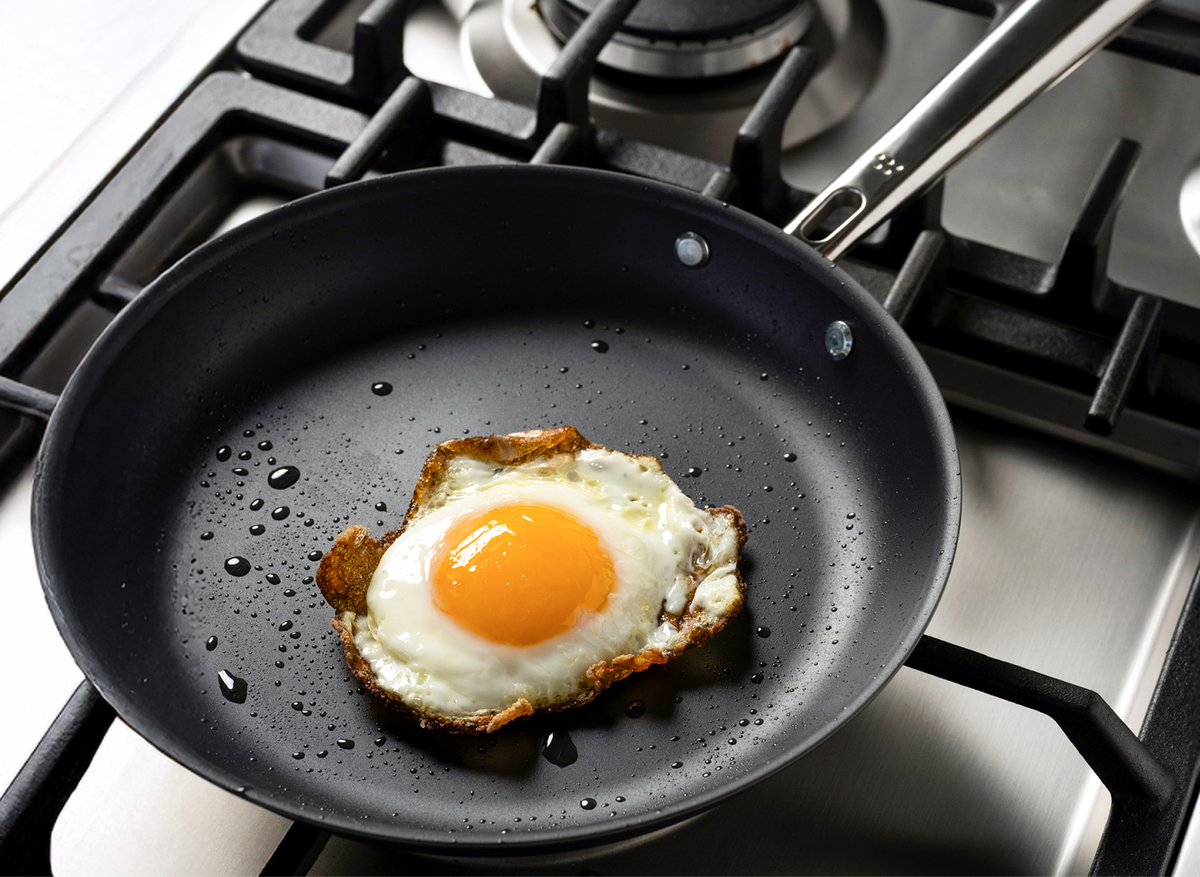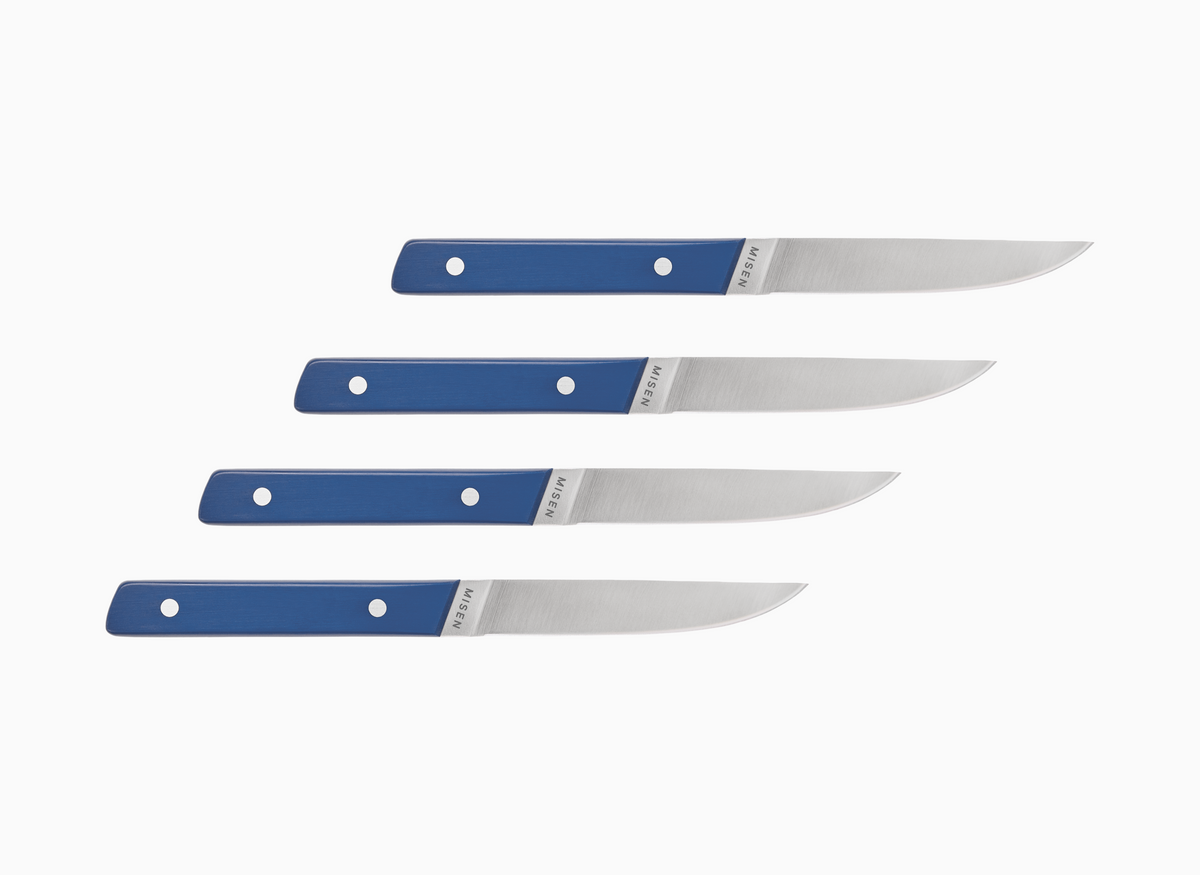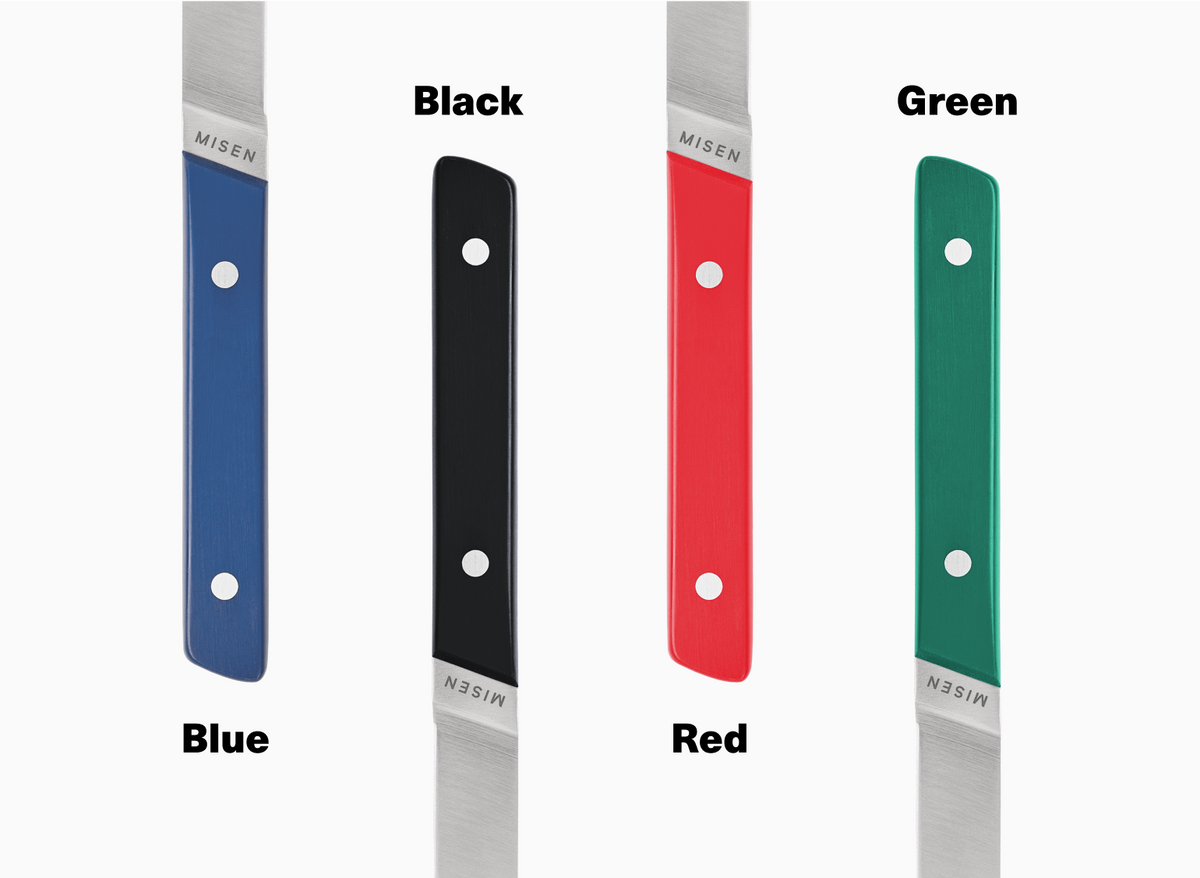How to Clean Stainless Steel Pans: Ultimate Step-by-Step Guide

Introduction
Why Stainless Steel Pans Are Kitchen Essentials
Stainless steel pans have become essential in both professional kitchens and home cooking for good reason. These workhorses excel at high-heat techniques like searing steaks and sautéing vegetables, delivering the kind of browning that builds incredible flavor. Unlike nonstick or ceramic options, stainless steel can handle extreme temperatures without breaking down or releasing anything you don't want in your food. The non-porous surface naturally resists bacteria and won't react with tomato sauce or lemon juice like some other materials. What really sets stainless steel apart is its incredible longevity - with the right care, these pans truly can be passed down through generations. They're compatible with every cooktop, including induction, and move effortlessly from stovetop to oven. While cast iron has its place, stainless steel offers similar versatility in a lighter, more maneuverable package that heats more evenly.
Common Cleaning Challenges and Misconceptions
Many home cooks struggle with stainless steel, but most issues come from simple misunderstandings about how to use these pans. The biggest myth? That food always sticks to stainless steel. Actually, sticking happens when you skip proper preheating or add food to a cold pan. You'll learn the simple water droplet test in our maintenance section that prevents this entirely. Another misconception is cranking up the heat - medium heat works perfectly since stainless steel holds and distributes heat so well. And those stubborn stains that seem impossible to remove? You don't need harsh chemicals or aggressive scrubbing. Simple pantry ingredients work just as effectively, as we'll show you in the deep cleaning section. Some people also worry about metals leaching into food, but quality stainless steel is one of the safest cooking surfaces available.
The Importance of Proper Maintenance for Longevity
Taking care of your stainless steel pans isn't just about keeping them looking good - it directly impacts how well they cook and how long they last. When you follow the maintenance routines we'll outline, your pans can easily last 20+ years instead of needing replacement every few seasons. The science is simple: proper care strengthens the natural protective layer on stainless steel, making your pans increasingly resistant to stains and corrosion over time. Well-maintained pans also cook better - they need less oil, heat more evenly, and give you the precise control needed for perfect searing. The key is staying ahead of problems. Address water spots before they become mineral deposits. Master the preheating technique to prevent sticking before it starts. Skip the harsh cleaners that damage the protective surface. Throughout this guide, you'll learn exactly how to build these simple habits into your cooking routine. And if you're looking for cookware built to last, our stainless steel pan is designed with durability in mind.
Understanding Stainless Steel Properties
Premium stainless steel pans feature aluminum or copper cores that combine durability with superior heat distribution for better cooking performance.
What Makes Stainless Steel Different from Other Cookware
Stainless steel's unique properties come from its composition as an alloy of iron mixed with chromium, carbon, manganese, copper, and nickel. Each metal serves a specific purpose - chromium and nickel prevent corrosion, carbon increases strength, copper improves heat retention, and manganese enhances malleability during manufacturing [1]. Unlike reactive metals such as aluminum or copper, stainless steel's non-porous surface won't interact with acidic foods or release harmful chemicals at high temperatures. The material requires a minimum of 16% chromium content to achieve food-grade status and maximum corrosion resistance [1]. Most quality cookware uses 300-series stainless steel (labeled as 18/8 or 18/10), which offers superior durability and resistance to wear [1]. Premium stainless steel pans often feature aluminum or copper cores sandwiched between steel layers (called 3-ply or 5-ply construction) to combine stainless steel's durability with better heat distribution [1]. This multi-layer design explains why quality stainless steel pans tend to be heavier - the additional metal layers and higher-grade materials contribute to both weight and performance [1].
How Heat Affects Your Stainless Steel Pans
Stainless steel's thermal properties directly impact cooking performance and pan longevity. With a relatively low thermal conductivity of 15-25 W/m·K, stainless steel heats up more slowly and less evenly than materials like aluminum (235 W/m·K) or copper [10]. This thermal conductivity increases with temperature - for example, 304 stainless steel conducts heat at 16.2 W/m·K at 100°C but rises to 21.5 W/m·K at 500°C [10]. To compensate for this limitation, quality stainless steel cookware often incorporates aluminum or copper cores, combining stainless steel's durability with better heat distribution [11]. When heating a stainless steel pan, temperature changes transfer more gradually compared to high-conductivity metals, which explains why proper preheating is essential for preventing food from sticking [11]. The pan's thermal response also varies based on factors like chromium content and manufacturing process - cold rolling typically increases conductivity by improving material density and uniformity [10].
Why Food Sticks and Stains Occur
Food sticking to stainless steel pans typically stems from improper preheating and temperature control rather than the material itself. When a pan isn't properly preheated before adding oil, or when cold food is added directly to a hot pan, proteins immediately bond with the metal surface [12]. The key to preventing sticking lies in following the 'hot pan, cold fat' method - preheating the dry pan over medium heat, then adding oil only once the pan reaches the right temperature [12]. You can test proper preheating by adding a few water drops - they should form slippery beads that slide around the surface rather than sizzling or remaining stationary [12]. Stains and discoloration often result from overheating, which creates rainbow-colored patches on the steel's surface [13]. Additionally, using high heat degrades the cooking fat, reducing its effectiveness as a barrier between food and metal [12]. Hard water can leave chalky, white residue when pans aren't dried immediately after washing, while salt added to cold water can cause permanent pitting damage in the pan's surface [13].
Identifying Different Types of Residue and Discoloration
Different types of residue and discoloration require specific cleaning approaches. Rainbow-colored stains often appear from overheating and can be removed with a vinegar solution - either applied directly or mixed with water in a 3:1 ratio and boiled in the pan [14]. Brown stains and black marks commonly accumulate on pan bottoms over time, requiring more intensive cleaning methods. For tough, burnt-on residue, a paste made from baking soda and water proves highly effective when simmered until the liquid evaporates [15]. Chalky white spots typically indicate mineral deposits from hard water, while pitting damage can occur when salt contacts cold pan surfaces [15]. Heat tint manifests as rainbow-colored patches when pans are exposed to excessive temperatures [15]. The most stubborn discoloration often responds best to a combination of Bar Keepers Friend Cookware Cleanser & Polish with steel wool, which can restore even heavily stained pans to like-new condition [14].
Essential Cleaning Supplies and Preparation
Stock your cleaning arsenal with both commercial cleaners like Bar Keepers Friend and household ingredients like baking soda for versatile stain-fighting power.
Must-Have Tools for Effective Cleaning
A well-equipped cleaning arsenal makes maintaining your stainless steel pans significantly easier. Start with basic tools like a long-handled dish brush to safely loosen stuck-on food particles while keeping hands away from hot surfaces. For daily cleaning, use a standard scouring pad or sponge - while these will create minor surface scratches, they're more effective than softer alternatives. Keep unscented dish soap, clean absorbent towels, and protective gloves on hand for regular maintenance. For tackling stubborn stains, stock both oxalic acid-based cleaners and baking soda - commercial cleaners remove the toughest stains more effectively, while baking soda works well for lighter cleaning tasks. Include toothpicks in your toolkit to clean food particles from pan rivets and corners. When dealing with severely scorched pans, have a large stock pot or roasting pan available for boiling cleaning solutions.
Safe Commercial Cleaners for Stainless Steel
Oxalic acid-based cleaners stand out as the most effective commercial option for tough stains on stainless steel cookware, outperforming alternatives while requiring less scrubbing effort. For daily cleaning tasks, specialized stainless steel cleaners excel at removing greasy splatters and fingerprints without streaking or darkening surfaces. Some cleaners effectively remove grime while creating a protective barrier that helps water drain faster and prevents future water spots. When dealing with rust marks or heat-induced yellowing on cookware bottoms, brightening products specifically target these issues and can significantly lighten or remove old stains with a single application. For those seeking eco-friendly options, look for plant-based cleaners that combine effective cleaning power with natural ingredients. Avoid cleaners containing bleach, chlorides, or ammonia, as these chemicals can permanently damage the protective chromium oxide layer of stainless steel.
Household Ingredients That Work Wonders
Common household ingredients can effectively clean stainless steel pans without harsh chemicals. Baking soda serves as a versatile cleaner - create a paste with water for scrubbing tough stains, or combine with hot water and boil in the pan to remove burnt-on residue. White vinegar excels at removing rainbow discoloration and hard water spots - either apply directly or mix with water in a 3:1 ratio and boil in the affected pan. For particularly stubborn stains, combine baking soda with lemon juice to create an abrasive paste that helps break down cooked-on oils and food particles. While baking soda works well for lighter cleaning tasks, it requires more scrubbing effort compared to commercial cleaners for the toughest stains. For daily maintenance, hot water and unscented dish soap provide sufficient cleaning power without risking damage to the pan's surface.
Products and Techniques to Avoid
Several common cleaning methods and products can permanently damage stainless steel cookware. Never use steel wool or highly abrasive scrubbers, as these create deep scratches that trap food particles and bacteria. Harsh chemicals like bleach, oven cleaners, and ammonia-based products should be avoided since they break down stainless steel's protective chromium oxide layer. While it may be tempting to plunge a hot pan into cold water to loosen stuck food, this thermal shock can cause permanent warping. When dealing with salt-based seasonings, wait until water is boiling before adding them - salt contacting a cold pan surface leads to irreversible pitting damage. Though some manufacturers market their cookware as dishwasher-safe, hand washing is consistently the better choice for maintaining stainless steel's finish and preventing water spots.
Daily Cleaning Methods: Basic Maintenance
Let pans cool completely before cleaning, then use warm soapy water and immediate drying to maintain their pristine appearance.
Immediate Post-Cooking Care: Timing Matters
The first few minutes after cooking make all the difference in keeping your stainless steel pans pristine. Always let your pan cool completely before cleaning - that tempting cold water rinse on a hot pan can cause permanent warping [16]. Once it's safe to handle, wipe out excess oil and food with paper towels, then give it a quick soak in warm, soapy water. This simple step prevents food from hardening and becoming a cleaning nightmare [19]. A long-handled dish brush works perfectly for loosening stuck-on bits while keeping your hands safely away from any remaining heat [16]. This immediate attention is your secret weapon for maintaining that beautiful cooking surface over time [16]. For stubborn spots, we'll cover more intensive methods in the deep cleaning section below.
The Proper Handwashing Technique
Here's your simple handwashing routine that'll keep your stainless steel pans looking brand new. Start by letting the pan cool completely - patience here prevents warping. Once it's cool, rinse away loose food with warm water and let it soak briefly in warm, soapy water [20]. Use a soft sponge with regular dish soap, working in gentle circular motions. The key? Dry immediately with a clean cloth - this simple step prevents those pesky water spots and keeps your pan gleaming [20]. For everyday cleanup, hot soapy water and a non-abrasive sponge do the trick perfectly. Skip the steel wool and harsh cleaners - they'll damage that beautiful protective surface you're working so hard to maintain [13].
When to Use the Dishwasher (and When Not To)
Here's the real scoop on dishwashers and stainless steel: while technically possible, handwashing wins every time for keeping your pans in top shape. Yes, quality 304-grade (18/10) stainless steel can handle the dishwasher's heat and detergents thanks to its protective chromium oxide layer [21]. But here's what to watch for - pans with aluminum bases or special coatings need to stay out of the dishwasher, as harsh detergents can damage these materials [21]. Always check for that dishwasher-safe symbol on your pan's base first. Got wooden or plastic handles? Skip the dishwasher entirely - the heat and moisture will warp them [21]. If you do use the dishwasher, top rack is your friend (it's cooler up there), and grab those pans immediately after the cycle to prevent water spots [22].
Drying and Storing to Prevent Water Spots
The final step is often the most important - proper drying and storage keep your pans spot-free and ready for action. Dry your pans immediately after washing (seriously, right away!) to prevent those annoying water spots that can lead to corrosion [13]. Already got water spots? No worries - just dampen the surface and give it a gentle scrub with a bit of baking soda on your sponge [13]. When storing, make sure pans are bone dry to avoid calcium buildup - that chalky white stuff that makes pans look older than they are. If you do spot calcium deposits, here's a quick fix: boil 1 part vinegar to 3 parts water in the pan, let it cool, then wash and dry as usual [13]. The secret to long-lasting cookware? Make this routine second nature - clean and dry after every use, even when the pan looks pretty clean. Your future self will thank you [13].
Deep Cleaning Techniques: Tackling Stubborn Residue
Bar Keepers Friend outperforms other cleaners for tough stains, creating a gleaming finish that helps mask scratches with minimal effort.
The Boiling Water Method for Stuck-On Food
The boiling water method is one of the most effective techniques for removing stubborn stuck-on food from stainless steel pans. Start by filling the affected pan with enough hot water to cover any residue, then add dish soap and bring the mixture to a boil [23]. While the water is still hot, use a long-handled dish brush like the OXO Good Grips to safely loosen food particles while keeping hands away from the hot surface [16]. For particularly challenging burnt-on residue, add a few spoonfuls of baking soda to the water and let it simmer until most of the liquid evaporates [13]. The combination of heat and baking soda helps break down even the toughest stuck-on food. Once the pan has cooled enough to handle safely, scrub away any remaining residue with a non-abrasive sponge and wash with hot, soapy water [16]. Never add cold water to a hot pan during this process, as the sudden temperature change can cause permanent warping [23].
Baking Soda and Vinegar Solutions for Tough Stains
Baking soda and vinegar create a powerful cleaning combination for tough stains on stainless steel. Mix 1/2 cup baking soda with 1/2 cup white vinegar and hot water, then let the solution bubble and react for several minutes to help dislodge stuck-on food particles [24]. For optimal results, soak the pan in this mixture for 15-30 minutes before scrubbing. The baking soda acts as a gentle abrasive while the vinegar helps break down stubborn residue [24]. For particularly challenging burnt-on messes, create a paste using baking soda and water, letting it sit briefly on the affected areas before scrubbing with a non-abrasive sponge [13]. Testing has shown that while baking soda works effectively for lighter stains, it requires more scrubbing effort compared to commercial cleaners like Bar Keepers Friend for the toughest buildup [16]. For an enhanced cleaning boost, bring a mixture of baking soda and water to a boil in the pan, letting it simmer until most liquid evaporates - this method helps break down even the most stubborn burnt-on residue [13].
Bar Keepers Friend and Other Commercial Solutions
Bar Keepers Friend stands out as the most effective commercial cleaner for stainless steel, consistently outperforming other products in testing. The powder formula excels at removing even the stickiest messes like peanut butter, marmalade, and ketchup with a single swipe, while leaving behind a super smooth, gleaming finish that helps mask scratches [25][26]. For optimal results, let the powder sit on the surface for about 10 seconds before scrubbing in circular motions with the soft side of a sponge [26]. While the liquid version exists, testing shows the original powder formula performs significantly better [26]. Magic Stainless Steel Cleaner & Polish offers comparable cleaning power and potentially superior fingerprint resistance, though its aerosol format requires careful storage due to flammability [25]. For environmentally conscious consumers, ECOS Stainless Steel Cleaner & Polish bears the EPA SaferChoice label and Leaping Bunny certification, though it requires more effort to achieve a streak-free finish [25]. Therapy Clean combines effective cleaning power with plant-based ingredients and a pleasant lavender scent, while Method stands out for its 100% recyclable packaging [25].
Salt and Lime Technique for Greasy Residue
The salt and lime technique offers a highly effective natural solution for removing greasy residue from stainless steel pans. Start by squeezing fresh lime juice into the affected pan and adding several tablespoons of kosher or sea salt to create an abrasive cleaning mixture [27]. Let this solution sit for at least 10 minutes to allow the acid from the lime to break down stubborn grease and food particles. The natural acidity of the lime works to dissolve accumulated oils while the gentle abrasiveness of the salt helps lift away residue without damaging the pan's surface [28]. After the solution has had time to work, use a non-abrasive sponge to vigorously scrub the mixture around the pan's surface, focusing on any particularly greasy areas [27]. This method proves especially useful for dealing with built-up grease that regular dish soap struggles to remove, while being completely safe for your cookware's finish [28].
Restoring and Maintaining Your Stainless Steel Pans
Regular maintenance using the water droplet test and immediate drying prevents damage and extends your cookware's lifespan beyond decades.
Removing Heat Tint and Rainbow Discoloration
Heat tint appears as rainbow-colored swirls on stainless steel pans when chromium in the metal reacts with oxygen at high temperatures, creating a thickened protective oxide layer. While this iridescent discoloration may look concerning, it's purely cosmetic and won't affect your pan's performance or food safety. The most effective removal method uses white vinegar's natural acidity to break down the oxidized layer - simply apply diluted white vinegar to the affected areas and scrub gently with a non-abrasive sponge. For stubborn rainbow stains, create a paste using baking soda and water, applying it directly to the discolored areas before scrubbing in circular motions. Commercial cleaners containing mild oxalic acid can also effectively eliminate heat tint while being gentle enough to preserve the pan's surface. To prevent future discoloration, avoid exposing pans to extreme temperatures that cause the metal to glow dull red, as this intense heat accelerates oxide layer formation.
Eliminating Water Spots and Mineral Deposits
Hard water stains appear as white, chalky residue on stainless steel surfaces when mineral-rich water evaporates, leaving behind calcium and magnesium deposits. While these deposits don't permanently damage cookware, they can harbor bacteria if left untreated. The most effective removal method combines equal parts water and distilled white vinegar - avoid flavored vinegars as their sugar content can damage the pan. Bring this mixture to a boil, ensuring it covers all stained areas, then let it cool completely before washing normally. For stubborn deposits, create a paste using baking soda and vinegar, applying it directly to affected areas while scrubbing with the steel's grain using a non-abrasive cloth. Club soda offers another solution, as its carbonation helps lift mineral deposits from the surface. To prevent future buildup, immediately dry your stainless steel pans after washing rather than letting them air dry.
Dealing with Scratches and Surface Damage
Light scratches are a normal part of using stainless steel cookware and don't affect performance or food safety. For superficial scratches, create a paste using baking soda and water, working in the direction of the steel's grain with a soft microfiber cloth. Deeper scratches require more intensive treatment - start by thoroughly cleaning the area with vinegar and a soft cloth to remove any debris or residue. For significant scratches, apply oil liberally to an abrasive pad and buff the surface using moderate pressure, always following the grain direction to avoid further damage. While silicon or bamboo utensils can help prevent new scratches, attempting to maintain completely scratch-free pans is impractical for cookware that's regularly used. If dealing with extensive damage that DIY methods can't address, consider consulting a professional for restoration rather than risking additional surface damage.
Preventative Care: The Water Drop Method and Other Tips
The water drop test provides a reliable way to check if your pan is properly preheated before cooking. Add a few drops of water to the heated pan - they should form mercury-like balls that dance across the surface, rather than sitting still or immediately evaporating. For optimal results, always preheat pans on medium-low heat rather than high, since quality stainless steel effectively holds heat and can easily overheat on high settings. Never add cold food directly to a hot pan, as the temperature shock causes the steel to contract and increases sticking. Instead, let refrigerated ingredients rest at room temperature for 10-15 minutes and pat them dry before cooking. As mentioned in earlier sections, salt should only be added to boiling water to avoid pitting damage. To prevent water spots, dry pans immediately after washing rather than letting them air dry. For long-term care, avoid metal scrubbers and harsh cleaners containing bleach or ammonia which can damage the protective chromium oxide layer. Following these preventative steps helps maintain your pan's cooking performance while avoiding common issues that lead to stuck food and surface damage.
Conclusion
Summary of Key Cleaning Methods
Throughout this guide, we've explored various cleaning methods tailored to different challenges. As covered in our daily cleaning section, hot soapy water and a non-abrasive sponge handle everyday residue perfectly. For tougher situations, the techniques detailed in our deep cleaning section - from the boiling water method to baking soda solutions - provide powerful yet gentle solutions. The key is matching your cleaning approach to the specific challenge: simple soap and water for daily use, baking soda for moderate buildup, vinegar for discoloration, and Bar Keepers Friend for the most stubborn stains. Remember the deglazing technique we discussed - using heat and liquid to release burnt-on food - works as effectively for cleaning as it does for making delicious pan sauces.
Creating a Maintenance Schedule for Your Cookware
Creating a simple maintenance routine ensures your stainless steel cookware performs beautifully for years to come. After each use, take a moment to dry your pans completely - this quick step prevents those pesky water spots and mineral deposits. Daily cleaning is straightforward: warm water, gentle dish soap, and a soft sponge are all you need.
Set aside time each week to inspect your pans for any discoloration or stubborn residue that needs extra attention with the vinegar or baking soda methods we've discussed. Monthly, do a quick check for any signs of pitting (those tiny pockmarks from salt damage) and address them promptly.
When storing your cookware, either hang it up or use pan protectors between stacked pieces to prevent scratches. And here's a chef's secret: always perform the water droplet test before cooking - when those drops dance like mercury across the surface, you know your pan is perfectly preheated and ready to perform.
Why Properly Maintained Stainless Steel Lasts for Generations
The beauty of quality stainless steel cookware lies in its incredible longevity. We're talking about pans that can serve your family for 50 years or more - there are vintage sets from the 1960s still searing steaks and sautéing vegetables today. This remarkable durability comes from the material itself: high-grade 18/10 stainless steel develops a protective chromium oxide layer that actually strengthens with proper care.
Professional kitchens prove this every day, relying on the same stainless steel pans through decades of intense daily use. The secret? Following the simple maintenance practices we've outlined - avoiding thermal shock, using appropriate cleaning methods, and steering clear of harsh chemicals that can damage that protective layer.
When you invest in quality stainless steel cookware and care for it properly, you're not just buying pans - you're investing in tools that will cook countless family meals, survive every kitchen mishap, and potentially become treasured heirlooms. That's the real value of understanding how to clean and maintain your stainless steel pans.
- https://www.foodandwine.com/guide-to-stainless-steel-cookware-8558171
- https://www.electrolux.co.th/en-th/blog/stainless-steel-cookware-benefits-how-to-use/?srsltid=AfmBOoo59HhJGFy2OhhYGg10P5juRvSXoWW-DmtEKIUA4Z-dBQz8emY7
- https://www.reviewed.com/cooking/features/how-to-cook-with-stainless-steel-cookware
- https://www.livingetc.com/advice/how-to-clean-stainless-steel-pans
- https://www.jessicahaizman.com/post/mastering-stainless-steel-pans-your-guide-to-non-stick-cooking-and-easy-maintenance
- https://traditionalcookingschool.com/food-preparation/the-scoop-on-stainless-steel-cookware/
- https://www.potsandpans.in/blogs/articles/stainless-steel-cookware-maintenance-tips-for-longevity?srsltid=AfmBOorf-JQAoxuYHlfjrIwBrKpwVSzj8-Qe8v5CRccFVHaeE6INiJBX
- https://misen.com/blogs/news/how-to-clean-stainless-steel-pans-essential-techniques-for-a-sparkling-finish?srsltid=AfmBOoqaFQ3Wp34rrWBKsdt-sj437K8y_pUOqBttEROhwWDpf-V0gUU3
- https://www.zhenneng.com/blog/how-long-do-stainless-steel-pots-and-pans-last
- https://steelprogroup.com/stainless-steel/properties/thermal-conductivity/
- https://thermtest.com/the-impacts-of-thermal-conductivity-on-cooking-technique
- https://www.foodnetwork.com/fn-dish/recipes/how-to-make-stainless-steel-nonstick
- https://www.bhg.com/homekeeping/house-cleaning/tips/how-to-clean-stainless-steel-pans/
- https://www.thekitchn.com/best-method-cleaning-discolored-stainless-steel-cookware-23186094
- https://www.boroughkitchen.com/blogs/news/how-to-clean-a-stainless-steel-pan-inside-and-out
- https://www.nytimes.com/wirecutter/guides/how-to-clean-stainless-steel-pans/
- https://www.goodhousekeeping.com/home/cleaning/g30661378/best-stainless-steel-cleaners/
- https://misen.com/blogs/news/how-to-clean-stainless-steel-pans-essential-techniques-for-a-sparkling-finish?srsltid=AfmBOoqQi9Cmpxc7nEJpv2mRkA3BpH1pxxn-CEbKTS_5EEjTyARtx6fH
- https://www.womanandhome.com/homes/kitchen/how-to-clean-stainless-steel-pans/
- https://misen.com/blogs/news/how-to-clean-stainless-steel-pans-essential-techniques-for-a-sparkling-finish?srsltid=AfmBOoqIUSrhQ8NnueP1-TzklABHOyx0Tr4bSthPTgtBfYRDnmhZNm8P
- https://www.familyhandyman.com/article/can-stainless-steel-go-in-the-dishwasher/?srsltid=AfmBOoq67edTv5PTiTQeKwH_03Vjlr4KhYtZjbYn491j-WJv9328fE3V
- https://www.finishinfo.com.au/ultimate-dishwashing-guide/loading/clean-stainless-steel-cookware/
- https://www.marthastewart.com/7617742/how-care-stainless-steel-pan-prevent-burning-warping
- https://www.thekitchn.com/cleaning-experts-stainless-steel-23679637
- https://www.foodnetwork.com/how-to/packages/shopping/product-reviews/best-stainless-steel-cleaners
- https://thepracticalkitchen.com/bar-keepers-friend-for-shiny-pans/
- https://www.homemadesimple.com/kitchen/how-to-clean-stainless-steel-pots/
- https://dalstrong.com/blogs/news/how-to-clean-stainless-steel-pans?srsltid=AfmBOoqtY-kIBbvKcHq6Rkiy4fZhxk4h3r3SX5j8Wp2jrtbB48GTn6hn
- https://www.tasteofhome.com/article/discoloration-of-stainless-steel/
- https://madeincookware.com/blogs/how-to-remove-calcium-deposits-from-stainless-steel
- https://www.thespruce.com/how-to-remove-hard-water-stains-from-stainless-steel-11678438
- https://www.marthastewart.com/how-to-remove-hard-water-stains-8663753
- https://www.reddit.com/r/Cooking/comments/17q10ie/do_all_stainless_steel_pans_have_scratches/
- https://en.stainlesseurope.com/Scratches-Out-of-Stainless-Steel
- https://www.thorkitchen.com/blog/how-remove-pesky-scratches-stainless-steel/?srsltid=AfmBOoo4byfg7CdExtn169Pwjv3SzasfRFFP2Ftds1dPI2pMosnH7_0b
- https://food52.com/story/15027-our-guide-for-caring-for-cleaning-stainless-steel-pans?srsltid=AfmBOoq8kvCR3tTt16rprNseZ4oLUyCn5uv1iQStWObf2N7N7zTwVDl8
- https://madeincookware.com/blogs/stainless-steel-care-how-to-bring-your-stainless-steel-back-to-new
- https://misen.com/blogs/news/how-to-clean-stainless-steel-pans-essential-techniques-for-a-sparkling-finish?srsltid=AfmBOor-MEXYiUrCXpgRYXHU0vC68F6hm4GvIiAUZ4yiMzpuUXo8oj6L
- https://www.thespruce.com/cleaning-stainless-steel-cookware-1900569
- https://learn.surlatable.com/how-to-clean-care-for-stainless-steel/
- https://theskillfulcook.com/how-long-do-stainless-steel-pans-last/
- https://www.welcometomykitchen.net/2023/11/stainless-steel-cookware-maintenance-tips-for-longevity.html
- https://prudentreviews.com/how-long-do-stainless-steel-pans-last/
